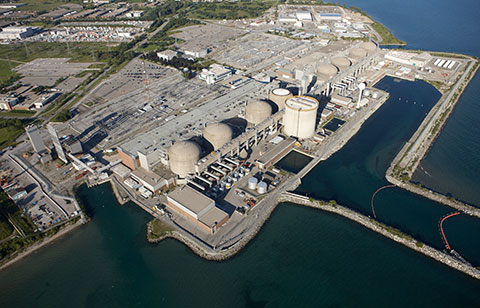
Nuclear energy accounts for about 60% of Ontario's electricity. It is promoted as clean and efficient - but nuclear waste is far from that. The significant amount of waste generated by nuclear power costs ratepayers and taxpayers billions of dollars.
Radioactive waste management involves many players including federal and provincial governments, resource industries, electricity generating companies and others. And with costs spread out over decades, it is truly a multi-dimensional and multi-generational challenge.
I recently put together a paper on the subject that you can read here.
Here are some of the key takeaways:
- Ontario is highly dependent on nuclear power to generate about 60% of the Province’s electricity. It is promoted as clean and efficient. Less featured is the large amount of nuclear waste that must be safely managed in perpetuity. Of prime concern is highly radioactive used nuclear fuel - about 2.3 million bundles owned by Ontario Power Generation (OPG) and increasing year over year.
- Nuclear waste is a multi-generational, multi-dimensional, and multi-billion dollar problem. It poses political, social, scientific, technical, safety, environmental, and financial challenges unlike any other.
- Responsibilities for managing radioactive waste are dispersed among many players and costs spread out for payment over many years – making accountability and transparency difficult to achieve. The total collective cost for dealing with nuclear waste in Canada is an unknown quantum.
- Costs for managing nuclear waste in Ontario are recovered in the price of electricity. Ratepayers pay almost all Ontario Power Generation expenditures associated with nuclear waste liabilities/costs – about $5 billion over thirteen years.
- There are significant costs looming on the horizon for the permanent storage of used nuclear fuel in a proposed deep geological repository likely in Ontario – costing an estimated $18.3 billion to $28.4 billion (2015 $). This translates to $1,310 to $2,033 per man, woman and child living in Ontario.
- There is a potential funding gap and deferment of costs to future generations of about $7.9 billion relative to estimated total costs for permanently placing used nuclear fuel in a deep geological repository.
- Nuclear power generation appears not all that profitable for Ontario Power Generation - losing $47 million over two years compared to a profit from hydroelectricity of $1,152 million.
The time is opportune to more openly integrate planning for nuclear waste into long-term energy planning for Ontario. To learn more, read the full paper on the subject and feel free to provide feedback in the comments below or on social media.
--
About the Author
Trevor Shaw is a CPA, CA, CMC, CQA. He is retired from 30 years of public service as a Principal with the Office of the Auditor General of Canada where he conducted performance, environmental and other audits of a variety of government programs. He writes on subjects of interest, does a little contract work, participates in art shows (oil paintings), and spends time with family and at the cabin. Trevor can be found on LinkedIn.



